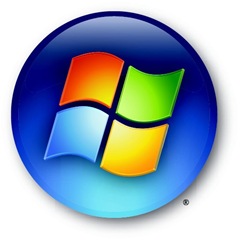Windows Vista Performance (the sequel)
Windows Vista with SP1 (and some tweaks) is faster than Windows Server 2008.
Since my last post on this topic, I've been doing my homework.
On my laptop Vista was always quicker than Server, but I have found some very useful information (most of which has already been or will be covered on the Springboard series of events and resources).
At a high level the steps to get Vista and Office to perform well on a laptop are:
- Laptop should have a minimum of 2GB Memory and a 7200 rpm disk (Solid State Disks can make a MASSIVE improvement).
- Install Windows Vista SP1 and Office 2007 SP1 and use Windows Update. Some OEM installations of Vista include a lot of unnecessary "value-add" features, most of which can be disabled (a clean install will perform better)
- Now find the latest stable, Windows Logo'd device drivers. Source them in this priority:
1. Hardware Manufacturer
2. OEM
3. Windows Update
4. Inbox
The devices where this will make the biggest difference are the Graphics Card and the Network Adapter.
As an example of this:
I've just installed Vista SP1 onto a laptop. There are no inbox drivers for the NVIDIA graphics card or the Intel Wireless Adapter. I connect my laptop to the internet via the onboard ethernet controller and run Windows Update. I'll download and install drivers for both (probably) - I'm now running drivers from Windows Update. Now go and look for device drivers on your hardware manufacturer's support website (for your graphics card and network) - Hardware Manufacturer's drivers have been "tweaked" for their specific implementations and have been thoroughly tested. Install these drivers if they are newer than the ones from Windows Update (you now have the best device drivers installed for your laptop). If there aren't any drivers there (that are newer than the ones you downloaded from Windows Update), now go and look on the OEM's support websites (NVIDIA and Intel in this example) - these drivers may be newer, but are not necessarily stable and have not been tested on your specific laptop model. If there's nothing there, you have ended up with option 3 (Windows Update drivers), if there are newer drivers here, install them but keep looking on your hardware manufacturer's website for their implementation of the drivers.
The above steps will give you a fast and stable build. Any other "issues" will be down to badly behaving applications - you'll need to get into some serious troubleshooting..
Dave
Comments
- Anonymous
January 01, 2003
So last September I posted this about some Windows Vista performance issues I was hearing about and what
